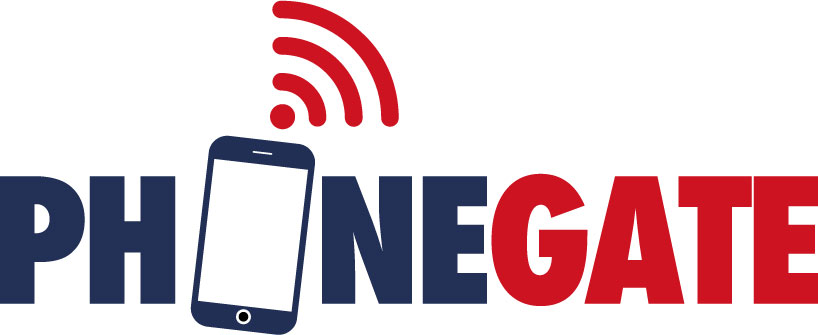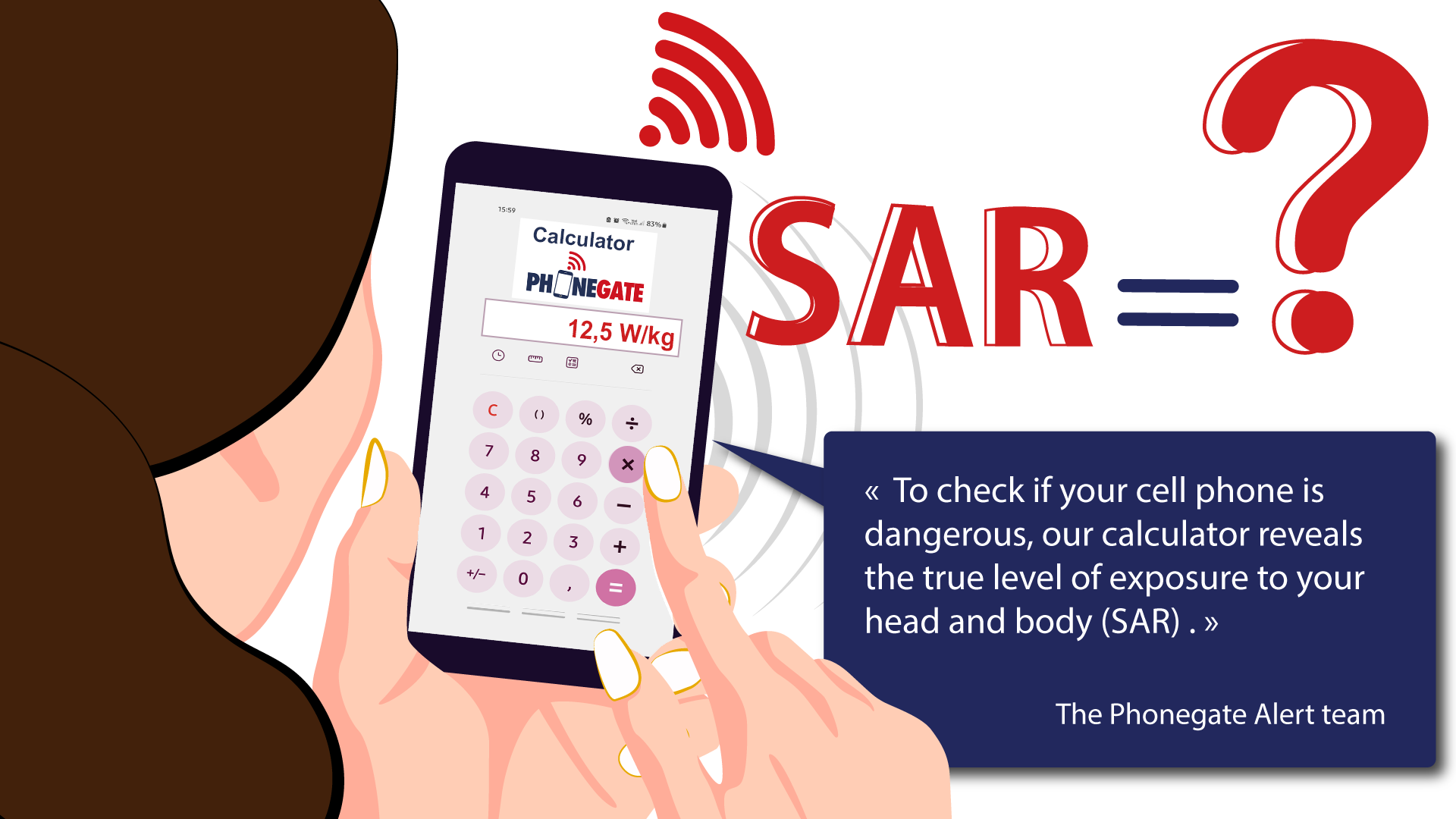
Find out in one click the real SAR of your mobile phone.
The Alerte Phonegate teams have set up this calculator (bêta test version) to allow you to know, in an indicative manner, the real specific absorption rate (SAR) of your mobile phone.
This calculation was made using a large amount of data that we have obliged mobile telephony regulatory agencies to make public, as well as the most up-to-date scientific knowledge bases on the subject.
It comes from five years of work by our NGO.
A color code comes with the results:
• if a value is displayed in GREEN, it means that it complies with the standards of the concerned country.
• if a value is displayed in RED, it means that the manufacturer’s SAR does not correspond to the reality of your exposure when your smartphone is close to your body or head. You will find below a summary table recalling the SAR limits not to be exceeded.
To launch the calculator, all you have to do is to enter the SAR measurements indicated by the manufacturer of your mobile phone (which you can find on the instructions or on the online documentation corresponding to your device), as well as your geographical area.
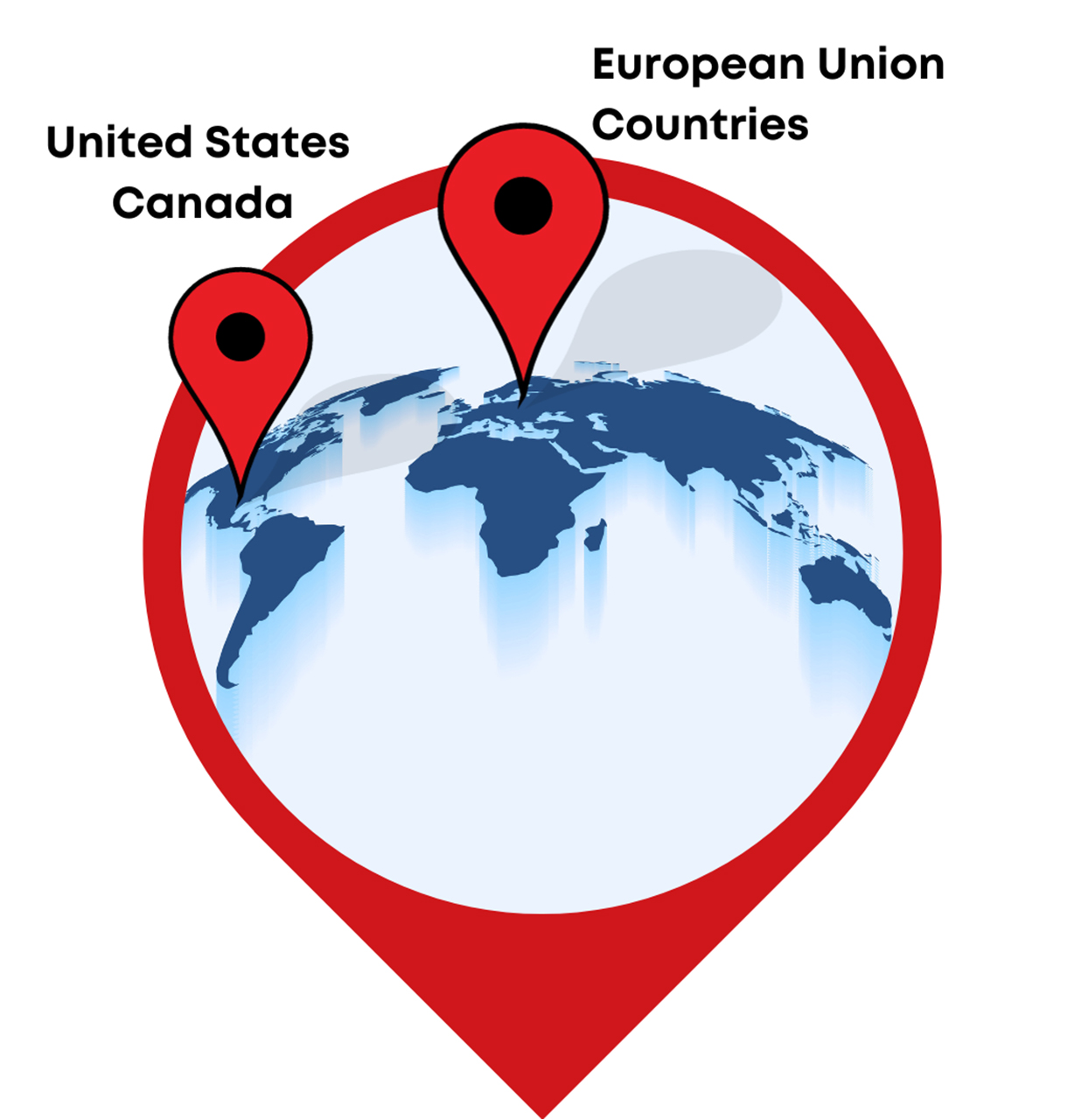
We start this version with the European Union, the United States and Canada.
Depending on your feedback, we will complete the list of available countries.
More informations about SAR

The specific absorption rate (SAR) is a measurement indicating the power of an energy flow, due to electromagnetic waves from a device (mobile phone, tablets, connected objects, etc.), absorbed by the body of the user when using it.
This indicator is measured in Watts per kilogram (W/kg).
Three indicators are used, depending on the parts of the body concerned: the head SAR, the trunk SAR and the limb SAR.
The display of the SAR is mandatory for the manufacturers of mobile phones, on each of their devices, since standards are to be respected. These differ according to geographical areas:
| Target indicator: |
European Union | North America |
| Limit for head SAR 👨 | 2 W/kg | 1,6 W/kg |
| Limit for trunk SAR | 2 W/kg | 1,6 W/kg |
| Limit for limb SAR 🦵 | 4 W/kg | 4 W/kg |
However, as we have documented many times, the way to measure SAR is unsatisfactoryand gives a misleading and falsely reassuring perception to billions of users/consumers.
Depending on the geographical area, SAR is measured on 1g (North America) or 10g (Europe) of human tissue equivalent, leading to significant differences in exposure measurements, with head and trunk SARs increasing by a factor of between 2 and 3 for a cell phone sold in Europe and in a hundred other countries.
Moreover, the measurements are not always taken directly on the skin, but sometimes at 5mm or even more, which does not correspond to the actual conditions of use of a mobile phone.
The French agency ANSES in 2019 recommended in its “Phonegate” report a trunk SAR measurement (shirt pocket) at zero millimeters from the skin. Incidentally, France submitted a formal objection to the European Commission in September 2020. However, to date, measurements are still taken at five millimeters in Europe and between 10 and 15 millimeters in North America. We have therefore taken into account the recommendations made by the French health safety agency (ANSES) in our calculator. Note that Apple has decided to measure the trunk SAR worldwide at 5 millimeters. That’s why we ask if you use an iPhone.
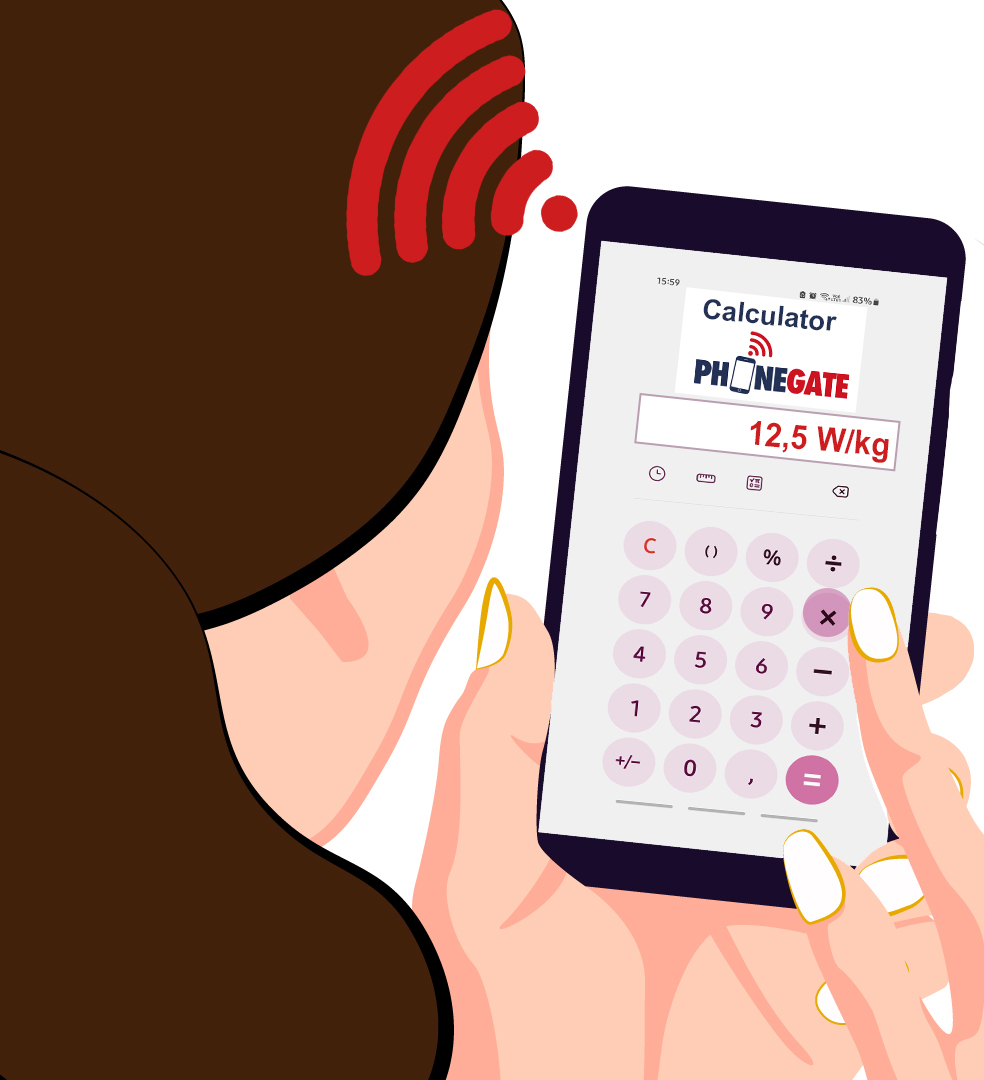
For mobile phones placed on the European market before June 2017, the trunk SAR test measurement was taken between 15 and 25 mm from the skin. Our calculator does not take this distance into account when measuring the SAR. To get an idea of the exposure from a model before 2017, one would have to further multiply the actual calculated SAR by a factor of 5 and more.
With regard to head SAR measurement, contrary to what is announced by manufacturers and regulators, exposure is not actually measured on contact but at a distance of 7 to 10 millimeters from the head (presence of a plastic insert on the head of the SAM dummy supposed to represent the ear). To calculate the real-head SAR, we based ourselves on the work published in 2019 by Prof. Om Gandhi in the IEEE reference journal. This applies to both Europe and North America.
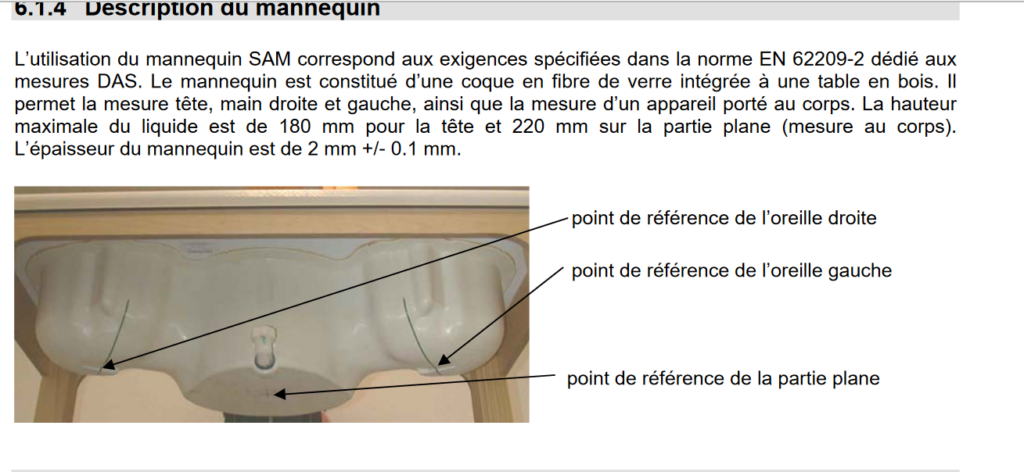
There is a margin of approximation of plus or minus 30% in laboratory SAR measurements. The calculator does not take this into account, but we wanted to point it out.
What’s more, regulators and manufacturers state that SAR is measured in what they call the “worst case”. This is measured during a 6-minute exposure. We contest this presentation of the facts, which is in line with the various malfunctions noted in SAR measurement. It should be noted that the SAR measurement for members (phone in trouser pocket or held in hand) in North America is carried out over 30 minutes, compared with 6 minutes in Europe. We have not yet taken this differential into account in our calculator?
More disturbing, SAR measures only the thermal or microwave effects of radiofrequencies, and takes no account of non-thermal effects. Our NGO is at the forefront of this issue, and has put forward proposals to ANSES for the introduction of an indicator that would offer real protection for users’ health.
Finally, you should be aware that some manufacturers can use software embedded in their handsets to manipulate the value of SAR tests during inspections (as was the case with Dieselgate). Under pressure from us, the French National Frequencies Agency introduced new test protocols three years ago, requiring manufacturers to disclose the presence of such software, and to give users the keys to deactivate it. This raises questions about the reliability of SAR values communicated by certain manufacturers.

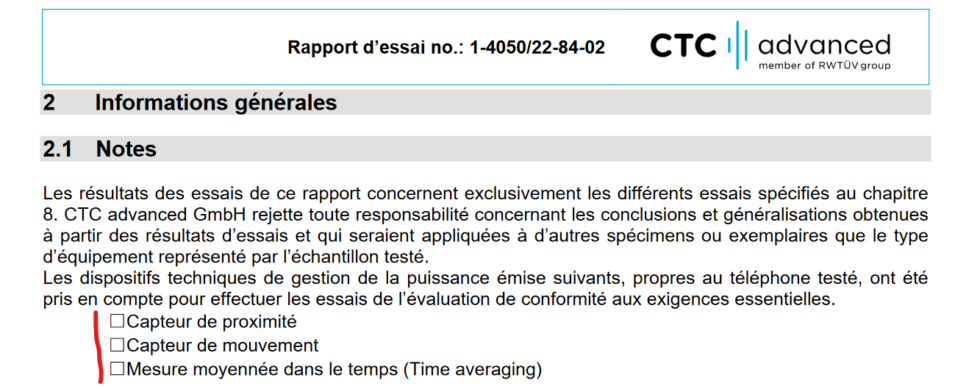
If you want to help our NGO for its action of alerting about the danger of cell phones, donate even a few euros.
Thanks in advance!
